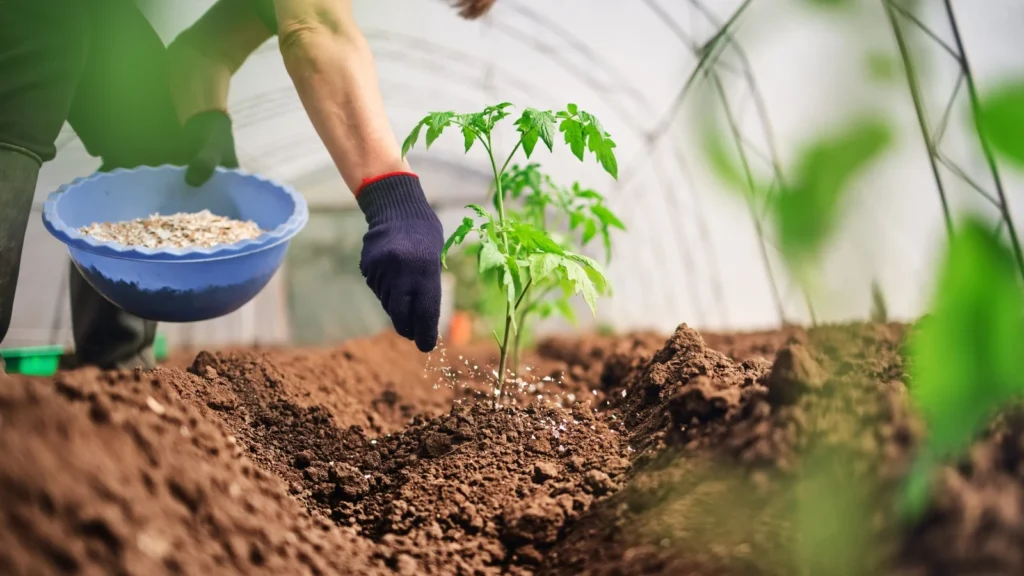Common Mistakes to Avoid When Using Fertiliser for Plants

Using fertiliser for plants is essential for encouraging healthy growth, lush foliage, and vibrant blooms. However, even the most enthusiastic gardener can harm their plants with simple mistakes in fertilisation. Knowing how to apply fertiliser properly can be the difference between a thriving garden and one that struggles. This article outlines the most common mistakes to avoid when using fertiliser for plants to ensure you get the best results from your gardening efforts.
Overfertilising: More Is Not Better
One of the most frequent mistakes gardeners make is overfertilising their plants. The belief that more nutrients will result in faster or healthier growth is a misconception. In reality, applying too much fertiliser can lead to fertiliser burn, where the plant’s roots are damaged by excess salts in the soil. This results in wilting, yellowing leaves, and even death in severe cases.
Overfertilising can also lead to an imbalance in the soil, causing nutrients to compete and block the uptake of others. For example, too much nitrogen can inhibit the absorption of potassium and magnesium. Stick to the recommended dosage on the fertiliser package and adjust only after observing your plant’s response.
Using the Wrong Type of Fertiliser
Not all fertilisers are created equal. Choosing the wrong type of fertiliser for plants can negatively impact their health. There are many formulations—some are designed for specific plants like roses, tomatoes, or succulents, while others cater to specific stages of plant growth such as flowering or fruiting.
For example, a high-nitrogen fertiliser may promote leaf growth but can reduce flowering in bloom-producing plants. Similarly, fertilisers formulated for lawns are not suitable for potted houseplants. It’s crucial to match the fertiliser type with the plant’s needs and its growth stage for optimal results.
Ignoring Soil Conditions
Another critical mistake is not considering the condition of the soil before applying fertiliser. Soil pH and nutrient content play a significant role in how well plants absorb nutrients. Applying fertiliser without knowing the soil’s existing nutrient levels can lead to over-application or nutrient imbalances.
Performing a soil test can help determine which nutrients are deficient and which are already present in adequate amounts. This allows for a more targeted approach to fertiliser for plants, leading to healthier growth and reduced waste.
Fertilising at the Wrong Time
Timing is a crucial factor in the effectiveness of fertiliser. Many gardeners make the mistake of fertilising at the wrong time of year or day. Fertilising during dormancy, for instance, is counterproductive because plants are not actively growing and cannot utilise the nutrients. This often results in nutrient runoff or salt buildup in the soil.
Similarly, applying fertiliser during the heat of the day can damage foliage and evaporate liquid fertilisers before they are absorbed. It is generally best to fertilise early in the morning or late in the afternoon when temperatures are cooler and plants can effectively absorb nutrients.
Applying Fertiliser to Dry Soil
Applying fertiliser to dry soil is another common mistake that can cause significant damage. When the soil is dry, plant roots are stressed, and adding fertiliser at this stage can burn the roots. Always water the soil a little before applying fertiliser, or apply it after rain or a watering session.
Liquid fertilisers especially should be used when the soil is moist to ensure even distribution and better absorption. For granular fertilisers, watering after application helps dissolve the granules and carries nutrients to the root zone effectively.
Not Following Instructions
Every fertiliser product comes with a specific set of instructions regarding dosage, frequency, and application method. Ignoring these guidelines can lead to under- or over-fertilisation, both of which are detrimental to plant health. A common error is assuming that “one size fits all” when it comes to application rates, regardless of plant size or type.
Some fertilisers need to be diluted, while others must be mixed into the soil or applied directly to the foliage. Always read the label and follow the manufacturer’s recommendations carefully to maximise the benefits of fertiliser for plants.
Using Old or Expired Fertiliser
Using expired or improperly stored fertiliser is another issue that can affect plant health. Over time, fertilisers can lose their effectiveness or become clumpy and hard to apply. Moisture exposure can cause chemical changes or even promote mould growth in organic fertilisers.
Always check the expiry date and store fertilisers in a cool, dry place. If you notice any foul odour, discolouration, or unusual texture, it’s best to discard the product and use a fresh one. Using degraded fertiliser may not only be ineffective but also harmful to your plants.
Neglecting Organic Alternatives
Many gardeners rely solely on synthetic fertilisers and overlook organic options like compost, manure, or seaweed extract. While synthetic fertilisers provide a quick nutrient boost, organic fertilisers for plants improve soil health and structure over time. Neglecting these natural sources can limit the long-term vitality of your garden.
Organic matter not only supplies nutrients but also encourages beneficial microbial activity, improves drainage, and helps retain moisture. A balanced approach that combines both synthetic and organic fertilisers is often the most effective and sustainable strategy.
Applying Fertiliser to the Leaves Unnecessarily
While foliar feeding has its place, applying fertiliser directly to leaves when it’s not designed for that purpose can cause leaf burn and wasted nutrients. Many fertilisers are formulated for root absorption and should be applied to the soil, not the foliage.
If you’re using a foliar fertiliser, make sure it’s clearly labelled as such and follow the directions. Avoid spraying during sunny or windy conditions, as this can lead to uneven application and damage the plant tissues.
Not Monitoring Plant Response
Finally, one of the biggest mistakes is failing to monitor how your plants respond after fertilisation. Every plant reacts differently based on its species, growing conditions, and overall health. Some signs of overfertilisation include yellowing leaves, brown leaf tips, and stunted growth. Underfertilised plants may have pale leaves, weak stems, and poor blooming.
Keep an eye on your plants for at least a few days after fertilising to detect any adverse reactions. Adjust your fertilisation routine based on their performance rather than sticking rigidly to a fixed schedule.
Conclusion
Using fertiliser for plants can significantly boost growth and health when done correctly. However, common mistakes such as overfertilising, using the wrong type, ignoring soil conditions, and poor timing can negate the benefits. Understanding your plants’ specific needs, reading labels carefully, and observing plant responses are all key to successful fertilisation. By avoiding these pitfalls, you can enjoy a thriving garden and maximise the effectiveness of every application.






